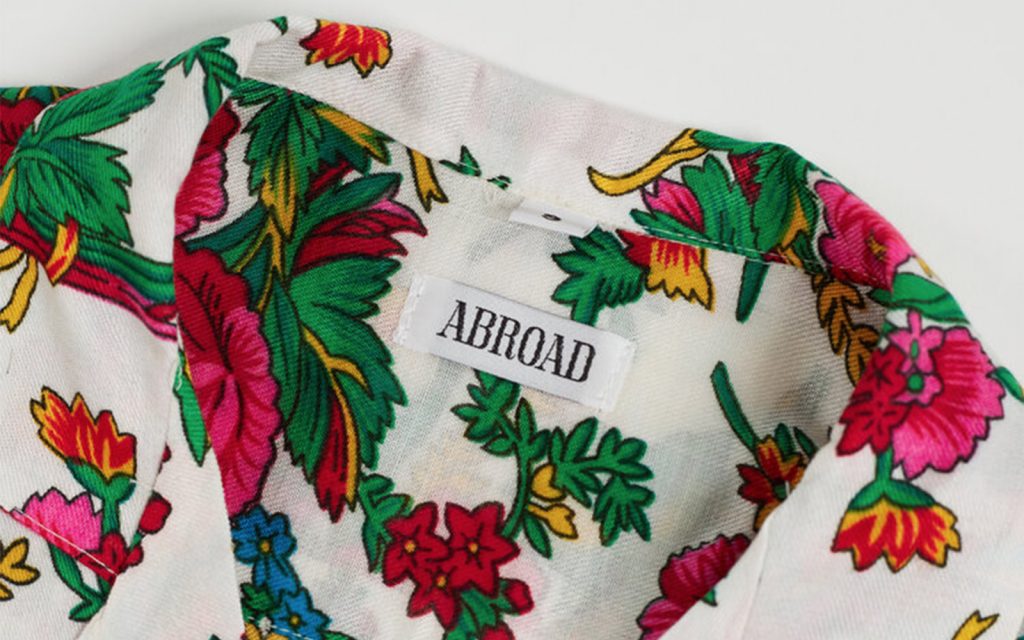Abroad Amalgamates Arabic Tradition and American Streetwear
Apparel adorned with a Saudi Arabian pattern traditionally reserved for older women

Abdulrahman Aldossry (aka NAN) founded clothing line Abroad with his childhood friend, Tony Fallatah. The two grew up in Riyadh, the capital city of Saudi Arabia, share what they call an “uncommon interest” in their home country and both fell in love with streetwear while studying in the USA, at a university in Pittsburgh. Abroad’s first collection, Taboo, incorporates an Arabic fabric known as Shalki—a style largely unknown to those without Arabic roots but to those who are familiar, one that’s associated with middle-aged and older women’s clothing. Aldossry supplants the floral fabric’s traditional use and presents it in a playful, contemporary manner.

“The specific elements we used for the Taboo collection were Shalki to emphasize our roots and streetwear basics like shorts and button-ups,” Aldossry tells CH of the marrying of two very different cultures. “Since this was our introduction collection, we wanted it to be simple with a clear representation. Future collections may be more focused on streetwear itself, but we would like to always have some element that represents us and our culture in each drop.”

The greens, pinks, yellows and off-whites in Abroad’s first collection are tied to Aldossry and his partner’s upbringings, their shared memories of representation as Arabic youth, and subtle subversion. “There is one very particular influence: Jay-Z and UGK’s ‘Big Pimpin,'” Aldossry continues. “As a kid, hearing an Arabic beat being sampled in an American rap song was fascinating. I won’t forget hearing that song and seeing that video. The cross-culture elements really stuck with me and I always wanted to do something like that. It’s been an aspiration of mine.”

Made in New York, the Taboo collection includes collared shirts, drawstring shorts and straight-leg trousers, all in flattering but not formal silhouettes. The brand’s exclusive Shalki pattern—available on green or white—adorns each piece, allowing for matching sets or mixing and matching.
“The word ‘Shalki’ is used for this specific fabric and pattern,” Aldossry explains to us. “The fabric is very light and always colorful, characterized by floral patterns. The fabric has a rich history and I think it simply represents what was fresh to older generations.”
Not only does Abroad attempt to reintroduce the pattern to younger generations but also to all genders. “I was talking to a friend about the idea for this collection in the early stages and they mentioned the word ‘taboo,'” he says. “English isn’t my first language so I had to look up the word because I wasn’t familiar. Looking into it, taboo felt like the right name for this collection because men wearing Shalki would be considered socially taboo. It’s unusual for men in the Arabian Peninsula to wear what’s considered feminine prints. We could have used Shemagh instead, which is more recognizable as a fabric worn by Arab men, but we wanted to use Shalki in a way that no one was using it because it’s beautiful and underutilized. We know that younger generations in those regions don’t see this fabric as something that’s fashionable. Ultimately, the goal was to release this line in America with cross-culture in mind, but we also want to break down the barrier of gender constructs.”
Images courtesy of Abroad












